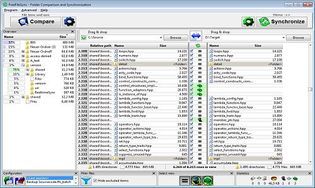


Linux system administration skills assessment.A guide to installing applications on Linux.Download RHEL 9 at no charge through the Red Hat Developer program.Working with rsync is easy and can be used on the command line, in scripts, and some tools wrap it in a nice UI for managing tasks. This is also the case with macOS, *BSDs, and other Unix-like operating systems. Since it comes packaged with most Linux distributions by default, it should be easy to get started. It can also do a quick hash check of files on the source and destination to determine whether or not it needs to transfer a new copy, possibly saving significant time and bandwidth. To accomplish this efficiently, by default, it will check the modification times of files. Also, rsync provides the ability to synchronize a directory structure (or even a single file) with another destination, local or remote. It checks to see if files exist in the destination before sending them, saving bandwidth and time for everything it skips.
Freefilesync centos update#
The rsync tool can recursively navigate a directory structure and update a second location with any new/changed/removed files. One of the most useful tools in a sysadmin’s belt for this kind of task is rsync. Admins (or normal users) often need to back up files or keep them in sync between multiple places (including local and remote) without transferring and overwrite all files on the target every time.


 0 kommentar(er)
0 kommentar(er)
